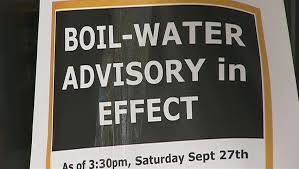Boil Water Orders Are Increasing
What This Means to Residential Water Users
by Gene Franks
“Boil water” alerts are issued by water suppliers when the safety of the water they deliver is in question. The standard instruction is that water should be brought to a rolling boil for at least one minute (longer at higher altitudes) to kill waterborne pathogens.
Formerly, government agencies tracked boil water alerts in the US as public information, but as the number of alerts has increased dramatically in recent times record keeping is no longer done. In the absence of such information, Dr. Kelly Reynolds of the University of Arizona recently used a Google News search to identify boil water alerts across the US for a two-week period in August 2013. Dr. Reynolds found 29 alerts during the period.
Alerts are issued for a variety of reasons–bad weather, especially flooding, a break in a water main, low system pressure, finding of fecal coliform by testing, system leaks, system maintenance, detection of E. coli or cryptosporidium by routing testing, and general elevated bacteria counts—are the most common.
As pipes and pumps age, and as power outages and incidents of challenging weather become more frequent, it is certain that boil water alerts will become more common.
The boil water strategy for assuring micro-biologically safe water is at best a risky one. We have been conditioned to rely on the safety of our water systems to provide potable water, but this perception of safety is changing. Each time a pipe ruptures or pressure in the pipe goes down, microbes are drawn into the delivery system. A blanket “boil water” warning, even if given on time and received by all concerned, is a haphazard way to assure safety. Studies have shown that both reception of the alert and compliance with its recommendations are far below 100%.
It is certain that we have gone past the time of complete trust in the water delivery system to provide pathogen-free water. Just as more and more people are now relying on home treatment devices to provide chemical-free and more aesthetically pleasing water for drinking, cooking, and bathing, it is logical that “final barrier” devices to assure that water is free of bacteria, viruses and protozoa are becoming more common for city residents.
Fortunately, modern water treatment has developed many alternatives–from very tight filters for drinking water to whole house treatments like ultraviolet. These are certain to become prominent fixtures in US homes. As Dr. Reynolds says, “The inherent, unpredictable nature of the distribution system and the quality maintenance of the distributed water add credence to the need for routine POU [point of use] treatment.”
Reference: Water Conditioning and Purification, Sept., 2013.





